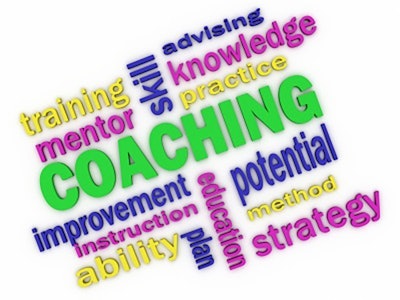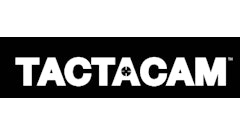
While all great contractors and field leaders see the need for coaching and mentoring, there is still so little of it being completed today. Because there’s little really great talent beating on contractors’ doors looking for work it is even more critical that contractors make a clear, consistent and thorough effort to incorporate coaching and mentoring into the fabric of any construction company.
- But what is coaching?
- What is mentoring?
- Aren’t they really just the same?
Well, NO! They might be distant cousins of each other, but they are not synonyms. Not all coaching involves mentoring; and not all mentoring necessarily involves coaching, although there is a better argument that when you mentor you are making use of coaching skills or strategies. (No argument on this from me!)
The difference between coaching and mentoring
Let’s address what the subtle differences might be between the two leadership efforts: coaching and mentoring.
“Coaching” is the act of bringing a critical eye while observing the performance of an individual and making timely suggestions, corrections and, just as timely, offering words of encouragement. While both coaches and mentors seek improvement in others, it is the coach who more often breaks down the “game film” of performance and addresses specific “skill step by skill step” work effort to redirect the individual toward improvement.
“Mentoring” is the act of bringing counsel and wisdom to an individual in order to lead him to see the bigger picture; perhaps assisting the person to see where he “could go” in his current job, career, etc. The mentor might perform some coaching with his protégé. Such coaching is more short-lived and more narrowly focused on assisting the individual to expand his boundaries about his potential and future possibilities, including recommending to the individual resource areas and people who can assist his professional growth.
Now, there are probably a hundred ways to define coaching and mentoring, but the definitions provided above will keep us close to each role’s main priorities. Let me now raise just two more questions that most contractors should be asking about now:
- Why should I include coaching and mentoring in my leadership approach?
- Is this effort really going to pay off?
Both questions are fair to ask! In fact, another question I often get from contractors is, “Why should I spend the time coaching and mentoring a ‘high potential’ worker only to have him quit on me and take on a job with a competitor?”
Suffering from such experiences can put a sour taste in any contractor’s mouth. However, my response to this is: “If you think education is expensive…try ignorance!”
If you don’t coach or mentor your staff and employees you eventually end up with a bunch of ignorant and poor performers working for you…if not worse!
Why coaching and mentoring is important for leadership
So, let’s go back and answer briefly the questions I posed earlier, “Why should I include coaching and mentoring in my leadership approach? And, is this effort really going to pay off?”
- Coaching is needed because we have a less-skilled workforce entering our industry
- There are a lot of “diamonds in the rough” just waiting to be discovered
- Many employees new to the construction industry are afraid of asking questions and need coaches to address issues while building their confidence so they do ask questions
- Because the days of just “throw em’ in there and let em’ figure it out themselves” are over…DONE!
- Coaching and mentoring has proven to shorten the learning curve; thus making employees more productive sooner rather than later
- Coaching and mentoring actually helps to improve the construction industry’s image, allowing more people to see our industry as a possible career choice
- Mentoring provides a line of sight for employees, assisting people to see where they could be down the road in their career
- Coaches and mentors provide that extra touch of interest, investment and insight that today’s workers desire and need
- Contractors who do not include coaching and mentoring in their growth strategies will simply die a slow death through down-sizing, living on hope that people with skills will hang around
Ok, it might not be all that doom and gloom if you don’t fully engage both coaching and mentoring, but not including these two key ingredients to employee retention will hurt you in very deep ways. The “thoroughbred” employees that I’ve written about in past articles will simply not view a contractor who does not coach or mentor as their long-term choice of who to work with and for. They also see that the lack of both leadership efforts almost always accompanies a lack of training and education. It’s funny how these two groups go together.
Let’s now present a few ideas on how to make coaching and mentoring part of your leadership effort, both personally and corporately. You, your own success and the greater retention of your current workers may be at risk.
Tips to make coaching part of your retention strategy
- Make coaching part of every leader’s roles and responsibilities and part of yearly performance reviews
- Provide training and education to teach leaders how to coach (There are some right and wrong ways to coach!)
- Have coaches provide their senior leader with weekly updates on their coaching efforts
- Support the coaching effort by encouraging leaders to take the extra time “here and there” during the workday (i.e. OTJC…On-the-Job Coaching)
- Conduct an informal assessment periodically with those who are receiving the coaching to ascertain effectiveness
- Over-stress with your leaders to Prepare–Demonstrate–Observe–Correct (PDOC)
- Encourage additional 5 to 15 minutes coaching sessions before and after work (think position coach commenting on “game film” with a player)
- As the owner or senior leader, coach your staff to serve as a model and inspiration for others to follow
- Encourage your coaches to learn regularly through reading, listening to CDs, attending workshops, etc.
- Hold all leaders accountable to coach and simply do not allow “slackers” to propagate; but give coaches a bit of leeway to coach in their own style
The list above is not meant to serve as how to coach but rather how to making coaching part of your strategy to retain workers. There are a number of books available on coaching as well as a number of articles I’ve authored over the past years that address coaching. Wherever you find yourself and the leaders in the organization, determine to raise everyone’s level of coaching and be consistent in this determination.
Tips to make mentoring part of your retention strategy
While coaching is now a growing and expected role for leaders in a construction company, mentoring might not always have the same requirement. Mentoring often engages fewer people since the process requires the mentor to be more seasoned, mature and sincerely interested in developing knowledge, expertise and future career paths for others. Pay close attention to some of these tips to making a mentoring effort in your company a solid part of retaining workers.
- Identify potential candidates to serve as a mentor — and educate them on how to mentor
- Identify potential protégés who have displayed some trait or behavior that projects their potential or shows a deeper interest to rise in the company
- Teach selected protégés how to learn, receive feedback and raise questions to their mentor
- Consider matching a mentor and a protégé based in part on personalities, some common interests and what both parties can benefit from experiencing, job areas, etc.
- Beware that a crew foreman or a project manager is not always the best to mentor a worker who directly reports to them (These same leaders, however, should be coaching!)
- Encourage and allow “natural” mentoring relationships to form
- Provide some time for the mentors and their protégés to meet periodically
- Engage mentors to update the owner or senior leaders on how they perceive the mentoring process is progressing; have senior leaders visit with protégés directly to ask for the same type of feedback
- Keep a formal mentoring process limited to the number of individuals involved; let mentoring be viewed as part of a desired action that not everyone may take part
Similar to learning how to coach, there are also resources to use that provide educating a mentor on the “nuts and bolts” of mentoring. The role of a mentor is a great role for senior craftsman and older field leaders who can provide more of the “passing the baton” of construction knowledge to the next generation.
Retaining our workers is hard work, and coaching and mentoring is just one of the steps to keep good workers longer. The longer workers hang in there with a contractor, and especially the more a contractor can serve up to the employee about the trade, skill and the specialty of construction involved, the longer (and often more loyal) an employee can become.
Nothing is easy about coaching and mentoring; it’s not something that can be read about. Both coaching and mentoring represent very active engagement between experienced and skilled workers and leaders sharing their knowledge, insights and tricks of the trade with those needed to sustain a company.
Begin your planning on how to build an effective coaching and mentoring process today. Start with coaching immediately and allow mentoring to begin to take root over time. Coaching is needed every day; position mentoring to provide for greater discussion and career building relationships.
Read all of Brad's articles on the seven steps to worker retention:
Step #5: Engagement and Participation
Step #6: Responsibility Enhancement
Step #7: Performance Review
*This article was originally published in 2014 and updated in 2019.




















